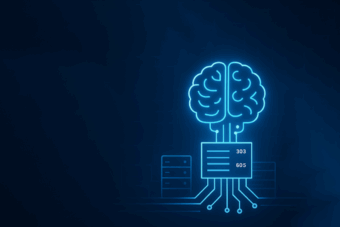Organizing and connecting information meaningfully has become crucial in today’s data-driven world. Knowledge Graphs excel in environments where relationships, flexibility, and context are essential. For companies managing complex data ecosystems, Knowledge Graphs offer an adaptable, scalable solution that’s both future-proof and optimized for modern data use cases.
If you deal with data that models complex relationships in cases like social networks, supply chains, and biomedical research, relationships are as important as the entities themselves. The amount and nature of these relationships may vary from node to node and thus it is natural to store the data in a real graph data structure rather than in a traditional database format. In a relational model, connecting a customer to multiple products, support requests, and service history might require complex joins, but in a Knowledge Graph, these relationships are stored as simple links.
This enables simpler modelling of complex data making it easier to develop, maintain and scale an information system. This article introduces Knowledge Graphs, their applications and challenges. Interested? Then, let’s look at what this piece of technology is.
What is a Knowledge Graph?
A Knowledge Graph is a data structure representing information as a network of entities and their interconnections. This network structure allows Knowledge Graphs to create a rich and interconnected representation of knowledge that’s easy to query and understand.
Unlike traditional databases structured as tables with rows and columns, Knowledge Graphs allow data to be interconnected in complex ways, capturing facts and the meaning behind those facts. This semantic representation makes them particularly useful for answering more sophisticated queries and providing intuitive insights.
Key Concepts: Entities, Relationships, and Semantics
Knowledge Graphs revolve around three main concepts:
Entities and Relationships: Entities are the building blocks – think of them as nodes in a network. These entities are connected by relationships, the edges, which define how entities interact. For instance, in a Knowledge Graph, the entity “J. R. R. Tolkien” could be connected to “The Lord of the Rings”.
Semantic Representation: A knowledge graph’s real strength lies in its ability to represent data semantically. This means it captures not only the connections between entities but also the context and meaning of those connections, enabling more nuanced and context-aware queries. Coming back to our example, “J. R. R. Tolkien” might be related to “The Lord of the Rings” by a relationship labeled “author of”.
Graph Database: Knowledge graphs often rely on specialized graph databases to store and manage this interconnected data. These databases are optimized for storing entities and relationships and are well-suited for scenarios where complex interconnections must be efficiently queried.
Technologies Behind Knowledge Graphs
Knowledge Graphs are built on technologies that facilitate their rich and interconnected nature. There are two fundamental groups of systems.
Edge-centric: Relationships are more significant than the entities themselves, such as in network flow problems, where the capacity and flow along the edges are crucial. A prominent example is RDF (Resource Description Framework), a standard model for data interchange that helps create statements about resources in the form of subject-predicate-object expressions in a triple store. Popular triple stores are e.g., Blazegraph, Amazone Neptune, and Apache Jena Fuseki.
Node-centric: Used when analyzing the properties or centrality of nodes, determining how they connect, or exploring the graph for entity-specific information. For example, we could model a huge social network graph using a node-centric approach. Technologies like Neo4j, Microsoft Cosmos DB, Amazon Neptune, and others provide the infrastructure to efficiently store, query, and manage graph-based data.
Applications of Knowledge Graphs
Knowledge Graphs have numerous real-world applications that make them invaluable for extracting meaningful information. Let’s have a look at three of those:
Supply Chain Analysis
The term Supply “Chain” is not quite right. The suppliers of producers of goods form complex networks that often span around the globe. Companies leverage Knowledge Graphs to model and analyze their supplier relationships and risks. To react as fast as possible, they need to have a deep understanding of the connections between different nodes in their supplier graphs, their competitors and events in the world that could affect their supply.
Financial Services
As an Asset Manager you would like to invest money in Deep Learning. You don’t only want to buy shares from Nvidia directly. You bet on a rise in market value of specific suppliers of tungsten, copper, tin, aluminum, and gold. Now you are looking for corresponding organizations as investment targets. A comprehensive business Knowledge Graph could answer this question.
Wealth Management
Wealth Managers look for new prospects. You have set up a novel product that you would like to promote to a specific kind of wealthy individual. They shall be within a certain demographic audience, live in a selected area and work for companies in a specific industrial sector. This can be seen as a database query against a Knowledge Graph that models all these connections as relationships in a graph.
When you already work for a large group of clients and to advise them best, you need relevant news around our clients. For example, it would be relevant when a company they own prepares for an IPO or when they move to another town. These events may directly or indirectly influence your clients, and you should reach out to them. A Knowledge Graph in the background connects the dots between an event, affected entities and the connection to your clients.
Advantages of Using Knowledge Graphs
Unlike relational databases that rely on rigid schemas, Knowledge Graphs can quickly adapt to new data and relationships. This flexibility makes them ideal for dynamic data environments where information is constantly evolving.
Because of their graph-based nature, Knowledge Graphs lend themselves well to visualizations, making it easier for data scientists and analysts to explore and understand the connections within data. This is especially valuable for discovering hidden patterns or relationships that might not be apparent otherwise.
Knowledge Graphs excel in answering semantic questions. Instead of merely looking for keywords, they allow for rich and complex queries, such as “Show all organizations with Black Rock being a shareholder”, capturing both the nodes (organizations) and their relationships (have shareholder). Such a query will not be expressed in natural language but in a dedicated query language. Nevertheless, Knowledge Graphs may be utilized in GenAI systems with techniques like Semantic RAG to enhance the knowledge of AI with graph data.
Challenges in Building and Using Knowledge Graphs
While Knowledge Graphs are powerful, they come with their own set of challenges.
Building a Knowledge Graph from scratch means defining how the graph should look like. A schema definition needs to be found. What types of nodes and relationships shall exist and what properties and value ranges are allowed? This looks easy at first glance, but if the graph needs to exist over a long period of time and is fed by multiple sources that evolve, we need to craft a schema that fits our needs and still is feasible wrt. the given data. Additionally, we might not be able to change the schema frequently, as there are consumers of our graph.
Creating a comprehensive Knowledge Graph often involves integrating data from diverse sources. Ensuring consistency and accuracy is a significant challenge, as disparate datasets may have varying levels of quality, conflicting information, or redundant records. To tackle this challenge, please read our series about Data Reconciliation.
Managing and querying the data efficiently can become increasingly challenging as a Knowledge Graph grows. Unlike traditional databases, which are optimized for certain types of data operations, scaling a Knowledge Graph to handle millions of nodes and relationships requires careful planning and optimization.
The Future of Knowledge Graphs
Knowledge Graphs are changing the way we think about and interact with data. They allow us to go beyond flat, disconnected records to create rich, meaningful relationships that mirror how we think about the real world. From providing instant answers in search engines to enabling enterprise-level data insights, their applications are vast and growing.
Knowledge Graphs are one way to store data. They are the natural way to store data that uses semantic relationships that cannot be leveraged efficiently in another data structure like, e.g., a SQL table. It is no contradiction to use different systems in parallel. Maybe it makes sense to store a huge graph in a graph database and enrich this data with real time data injected from a Kafka stream. These different technologies are all intended for certain use cases and will coexist in the future.
As artificial intelligence and machine learning continue to advance, Knowledge Graphs will play an increasingly critical role in helping machines understand the world the way humans do. They represent not just data but the stories and connections that bring information to life – making them an indispensable part of the future of intelligent systems.
CID and Knowledge Graphs
CID’s expertise in graph-based data is built upon more than 15 years of history. We have built business graphs about organizations, individuals, and locations with nearly a hundred million nodes and uncountable edges. The graphs grew over time, as did the technology and our team. We started with RDF and traversed to a node-centric approach using a Neo4J database.
The graphs incorporated several entity databases aligned using a complex reconciliation methodology. We created different views for several use cases. Systems ran entirely automatically 24/7 and updated their database using different APIs that permanently fed data into our system.
Once, a graph database was not fast and stable enough to handle the heavy load of requests that our users created. Thus, we developed read layers for horizontal scale-out using a highly optimized indexing technology.
We have acquired extensive knowledge by creating and working with knowledge graphs throughout the years. We learned from your journey and developed strategies to avoid failure. Our Data Engineers, Data Scientists, Software Developers, and DevOps Engineers became experts in building enterprise software solutions for complex graph data. Do you also want to go this way? Take the shortcut and get in touch so our team can share its insights and support your challenges.






